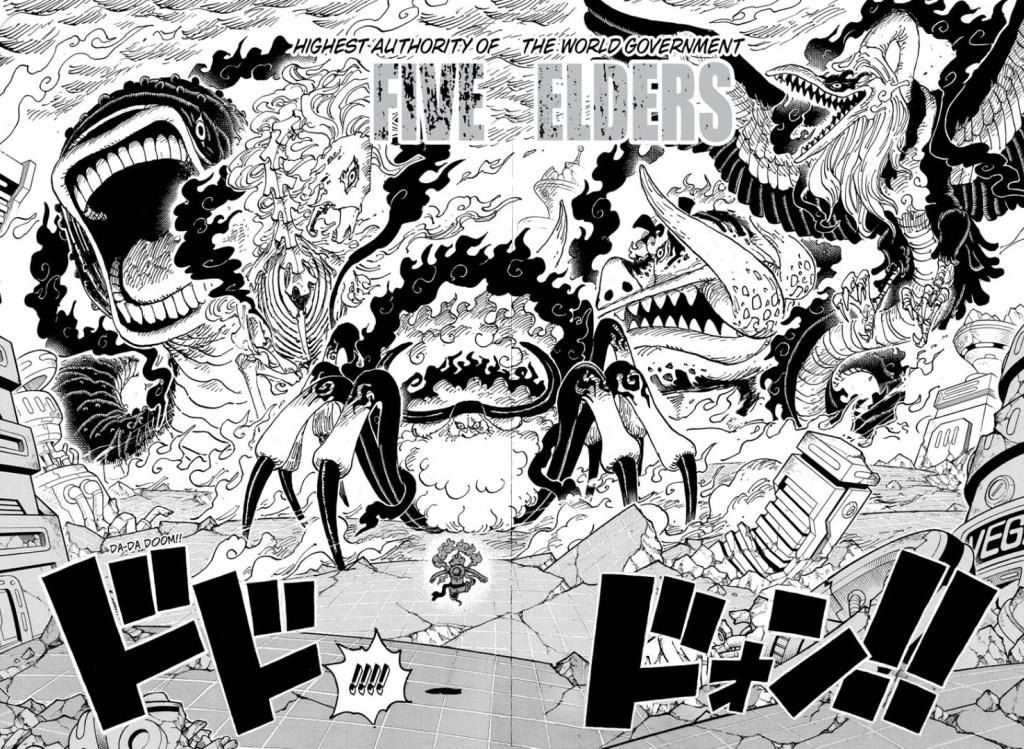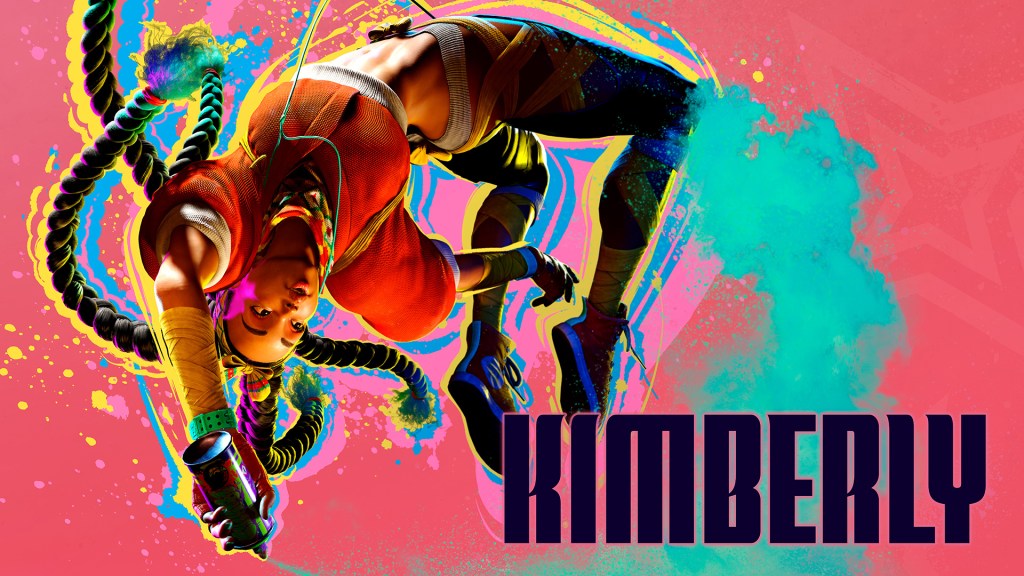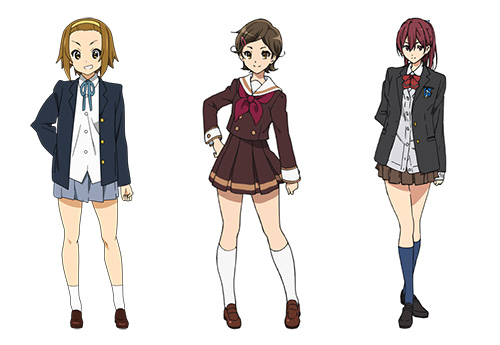I’ve been keeping up with the One Piece manga for many years now, though I don’t write about it all too often because I don’t feel the need. When the subject is one of the most gargantuan works of fiction in history, it’s not hard to find opinions, articles, podcasts, and videos discussing—or even dedicated entirely to—One Piece. However, the events of recent chapters, particularly the actions of certain characters, have been so significant that I feel compelled to share my thoughts.
Naturally, I’m going to be talking about HUGE SPOILERS for the One Piece manga. To the anime viewers and anyone else who doesn’t want the surprise ruined: turn away now.
The milestone I refer to is the long awaited arrival of the Five Elders into the main story and the full debut of their monstrous alternate forms, and the impact is something that only a select few series can ever accomplish, and that’s because they lack the longevity. The only one that springs to mind aside from One Piece is Detective Conan, whose main bad guy is still shrouded in mystery even after some major revelations.
In action manga, especially the shounen battle genre, villains come in many forms and can often be among the most exciting and interesting characters: minor nuisances, archenemies, rivals, erstwhile allies, etc. But one area that can make or break a battle manga is the arrival of a major antagonist, especially one that has been built up in the background. Freeza in Dragon Ball is an iconic example of this being done well—from the first mentions of him, to his initial reveal, and then to Freeza’s many transformations. The span of Freeza’s debut to his true form was a little over a year, or 58 chapters. The anime is even longer due to stretching out the story, as it was wont to do.
In contrast, the Five Elders in One Piece first showed up in 2002, and their descent onto Egghead Island happened this year in 2024. That’s 22 years, and over 860 chapters—enough time for infants to grow into full-fledged adults. And what’s even more astounding is that these appearances actually lived up to literal decades of anticipation!
On a very basic level, part of the reason the Five Elders are worthy of the hype is their physical appearance. They are legitimately menacing and bizarre in a way that not even the most dangerous and freakiest of Luffy’s foes can match. All five are based on demons and mythological creatures, and they exhibit a new level of uncanniness. Moreover, their powers are such that gazing upon them knocks the average soldier unconscious, and even Luffy’s new “Sun God Nika” form can only stymy them temporarily. In other words, the Elders look and feel like unprecedented threats to the Straw Hat Pirates.
Beyond the artistry in their designs, the weightiness also comes from how these monstrous forms have been mostly kept under wraps for so many years. Aside from an earlier hint when Sabo infiltrated their domain (which showed the Elders’ silhouettes transforming), it wasn’t even clear that they were physically strong in their own right. After all, as the heads of the World Government, it could easily be the case that they were just a group of wizened old men who rule through intellect, hegemonic inertia, and political influence. The fact that they’re actually capable of outclassing nearly every other character in One Piece is both a great twist and a satisfying fulfillment of the core of shounen battle manga. Why wouldn’t the literal leaders of the world also be the biggest badasses around?
The Five Elders also now open up even more speculation:
Why are they able to regenerate from any damage, and is there a catch that might just be their Achilles’s heel? And why are the Giant Pirates able to hold their own against the Elders?
Their names are references to five of the planets in the Solar System: Saint Jaygarcia Saturn, Saint Marcus Mars, Saint Topman Warcury, Saint Ethanbaron V. Nusjuro, and Saint Shepherd Ju Peter. Three of the other planets have references in the Ancient Weapons: Poseidon, Uranus, and Pluton (remember that this series began before Pluto was officially redesignated to a dwarf planet). What is their relationship, and could the Ancient Weapons somehow be key to defeating them? The two Weapons we know about in detail are associated with the sea—Poseidon is a mermaid who can control the massive Neptunians, and Pluton is the greatest battleship in history—so might the Five Elders be vulnerable to water in a way similar to Devil Fruit users? And could their distant-yet-absolute dominion over the world of One Piece have to do with a profound fear of the sea?
And what of their true leader, Imu? How can beings as powerful as the Five Elders be subservient to this individual?
One Piece is currently on a brief hiatus. This might be for the best—not just for the author, Oda, but for us readers. Maybe we need this breather before things get even more unpredictable.









 Utamaro (1793): Three Beauties of the Present Time
Utamaro (1793): Three Beauties of the Present Time







